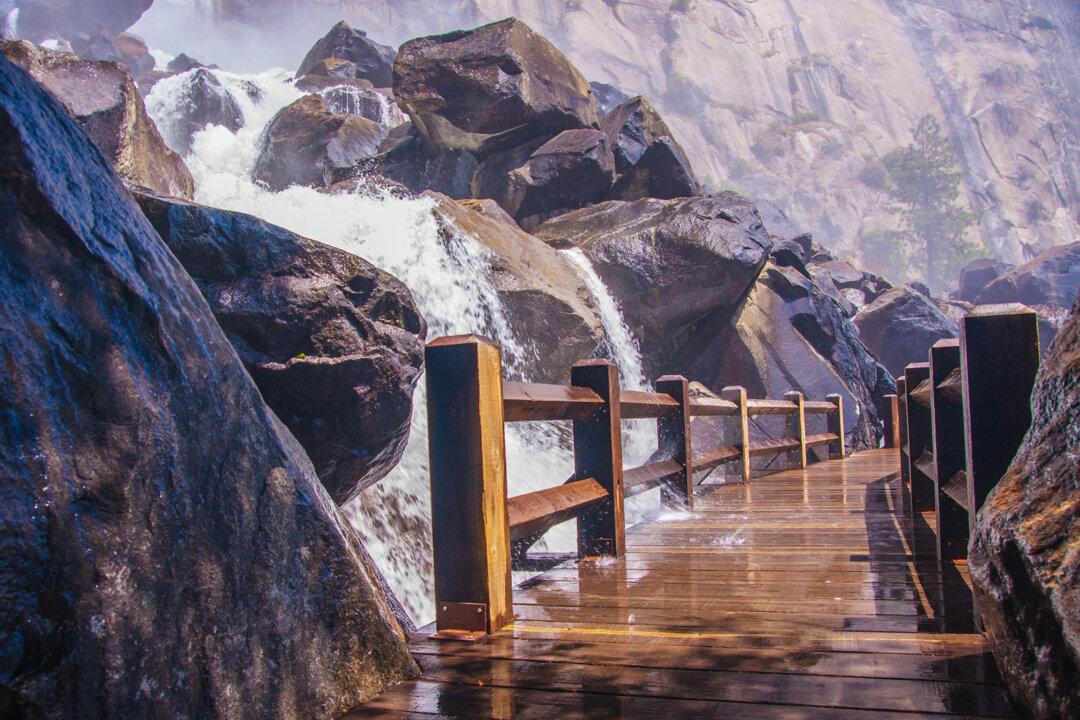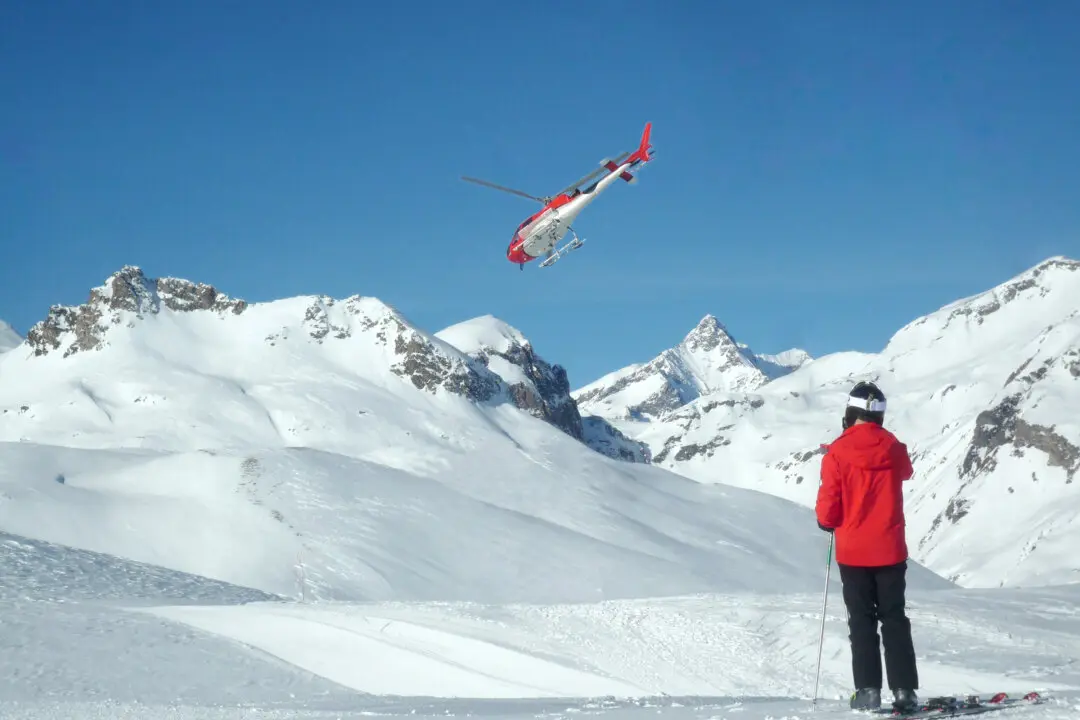San Jose—The massive snowpack in the Sierra Nevada this year has transformed California’s most famous park, Yosemite. And the impacts are likely to last all summer, and perhaps even longer.
The park’s world-famous waterfalls are thundering now as billions of gallons of melted snow cascade 1,000 feet or more down sheer granite cliffs. Park officials say there is so much snow at higher elevations from the winter’s parade of atmospheric river storms that flooding in Yosemite Valley is likely between late April and early July, which could close the park at times.
“All of the water is a huge change from the previous few years,” said Cory Goehring, lead naturalist for the Yosemite Conservancy, a San Francisco nonprofit group that runs outdoor programs in the park. “The meadows are wet and lush. The Merced River is rising. It’s raging. And the waterfalls? They are so loud, they sound like an airplane taking off with how loud they are.”
Work to clear the Tioga Road into Yosemite’s back country has begun, but this year it’s likely that the public won’t be able to drive there or to the end of Glacier Point Road until after July 1, the latest ever, park officials say.
Meanwhile, the High Sierra camps that are popular with backpackers and reserved through a lottery system will be closed all summer. And parks officials are warning hikers to be very careful on snowy trails, particularly near raging streams and rivers, which in past wet years have killed people as they were swept down stream.
“We always urge people to be careful, but especially this year,” said Scott Gediman, a longtime ranger at Yosemite National Park and the park’s spokesman.
On April 1, park officials measured the snowpack at Tuolumne Meadows at 15 feet deep—breaking the record from 1983 for the deepest April 1 measurement ever recorded, with records dating back to 1930. A few days later, it snowed 2 feet more in the area, which sits at about 8,600 feet elevation.
It even snowed slightly on a day in mid-April in Yosemite Valley, which is at about 4,000 feet elevation, but the snow didn’t stick. Campgrounds and hotels are open. Patches of snow are still visible in Yosemite Valley’s meadows. Trails out of the valley, however, remain covered with snow and largely impassible.
After three years of severe drought, which featured wildfires that closed the park, this year, snow shut it down.
Yosemite was closed for three weeks from Feb. 25 to March 18 as snow in Yosemite Valley accumulated to 10 feet deep. Power lines fell. Roofs collapsed. Trees snapped. The visitor center leaked. Fire hydrants were buried. Dump trucks hauled snow from roads so supplies could be brought to stores and ranger homes.
Other than a shut-down during the early days of the COVID pandemic in 2020, it was among the longest closures for the park, which receives more than 4 million visitors a year.
Now, the roads are clear and much of the snow in the valley has melted. Animals, including deer, bears, and red-winged blackbirds, are increasingly visible.
Despite a snowpack that is two-and-a-half times the historical average in the high country, the animals there should be fine, experts said. In very snowy years, some move to lower elevations, some delay reproduction, some hibernate.
“These animals have evolved for hundreds of thousands of years with the ebbs and flows in snowpack,” Goehring said. “They have adapted to them.”
But tourists without much experience in the wild should take extra precautions.
“Even day hikes in July off Tioga Pass Road and other high elevation places, you are going to be walking on snow part of the time,” said Roger Bales, a climate researcher at UC Merced who has field stations in Yosemite. “That can be an amazing experience. But you also need to be prepared for walking through water, through mud, and through wet snow. If it’s not snowy, it’s going to be muddy.”
High water levels in streams will pose real risks, he said.
Every year in Yosemite, roughly a dozen people die, often from heart attacks and car accidents. Several die every year by drowning. After wet winters, when rivers and streams are running much stronger than normal, some of the worst tragedies occur, illustrating the danger for this year’s visitors.
In 2011, Ramina Badal, a 21-year-old University of San Francisco nursing student from Manteca, and her friends Ninos Yacoub, 27, and Hormiz David, 22, died after they waded into the strong currents of the Merced River near the top of Vernal Fall to take a photo and were swept over the falls.
“Everyone was screaming,” witness Jake Bibee told the Associated Press at the time. “People were praying. What I will take away with me forever is the look on that grown man’s face as he was floating down that river knowing he was going to die and nobody could help them.”
The following year, two brothers, Jacob Adams, 6, and brother Andreas, 10, from Yorba Linda, were swept away in the Merced River while cooling off during a hike. Then in 2017, a 66-year old man died after falling off a footbridge and into the water at Wapama Falls near Hetch Hetchy on the park’s western edges.
“There is splendor and majesty in Yosemite,” Goehring said. “But there is caution to be exercised as well. This is a wild place. It’s not Disneyland. I would not suggest trying to cross any large creek or river here. That’s one of the most dangerous things you can do in the park. We need to respect nature and the risks that are there.”
Copyright #YR@ MediaNews Group, Inc. Visit at mercurynews.com. Distributed by Tribune Content Agency, LLC.






